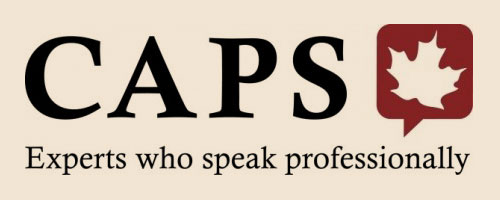How To Address the Needs of a Diverse Audience That Has Different Levels of Expertise, Skill and Interest in Your Topic
When presenting at a recent IT conference, there were many in the audience who asked for help in designing and delivering presentations that engage the audience and promote interaction, especially when presenting to a diverse audience with different levels of expertise, skill and interest in their topic. Here are three great questions that came up several times, by several people, within several different companies — and my answer below!
- When you are presenting a technical topic to a mixed audience (subject matter experts & laypeople), how do you provide briefing/context without boring – or losing the attention of – the experts?
- How do you structure our presentation when you have diverse stakeholders attending to make it relevant to all?
- When delivering IT presentations, it can be difficult to judge your audience’s level of experience or comfort with technology. How can you address everyone’s needs, also ensuring that you are not boring more advanced individuals but also accommodating those that need more assistance? Are there general statements that I can use during a presentation to better judge the relevance of the information I am sharing?
Answer:
To understand what each segment of your audience might need to hear, it’s important to establish the Objective of your meeting. In other words, what do you want your audience to learn, feel and do as a result of hearing your presentation? For example:
- Are you there to educate them (i.e. learn) of concepts or update them on the project?
- Inspire them to feel more connected, empowered, or excited by the project – or alternatively, do you need them to feel like they need to do more for the project, or that it’s in peril?
- What actions do you want to persuade them to take, to move to the next level of the communication, project or pitch?
Does your audience feel “seen?”
Once you have established how – and about what – you are going to educate, inspire and persuade your audience, then you would want to address the different experience levels of your audience right at the start of your presentation. This will make all members of your audience feel “seen,” and it will acknowledge that you have done your research in terms of knowing who is in your audience.
For example, something to the effect of “For those who have been part of this project before, there are some new people here that we just have to bring up to speed. So after I quickly update them on the important points of this project, we’ll all be on the same page and we’ll be able move forward more effectively.”
Or….
“Understanding that everyone here has different levels of experience with technology with this project, I’ll bring us all up to speed and get us on the same page, so that we can all move forward together.”
Focus Focus Focus!
Be as focused as possible in your meeting. Don’t spend too long explaining or re-explaining concepts that the experts or repeat audience members have been heard before. Remember that your job is to address the WHOLE audience – not just the experts, and not just the laypeople – so you’ll need to provide enough inf
(Need some clarify on how to focus your presentation? Check out How To Find Your Focus As a Speaker (video) for some added tips).
What’s the end point?
Finally, you would need to establish what the end point is for your meeting. What needs to be communicated/accomplished/moved forward? Establish that for yourself and share that with your audience as well. That way, everyone will better understand the purpose of the meeting, and be more likely to stay engaged throughout.
Have you got a public speaking question? Email me and I’ll feature it on my blog!






